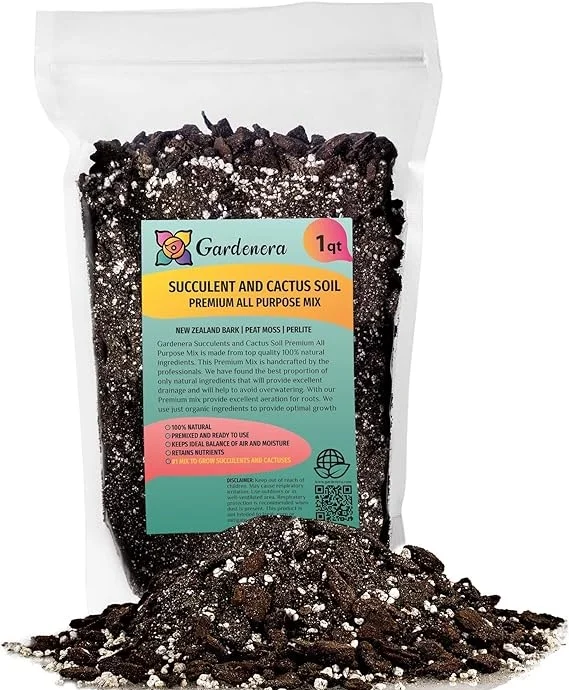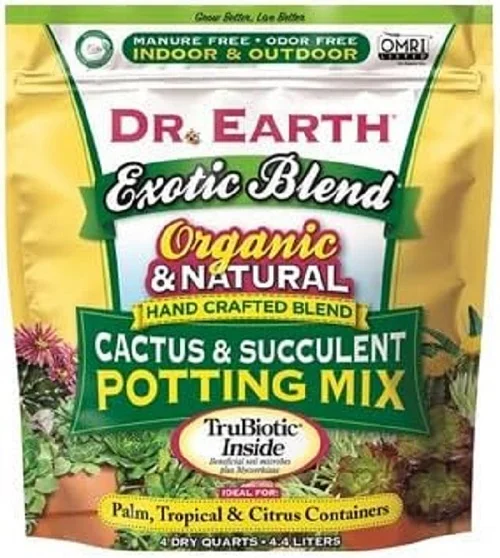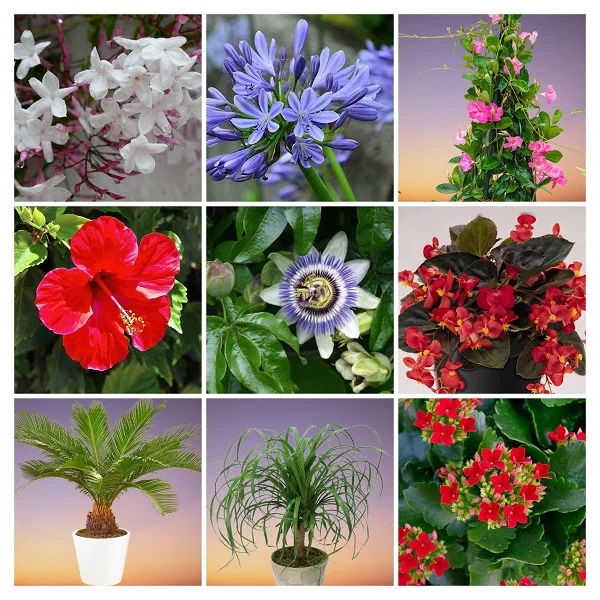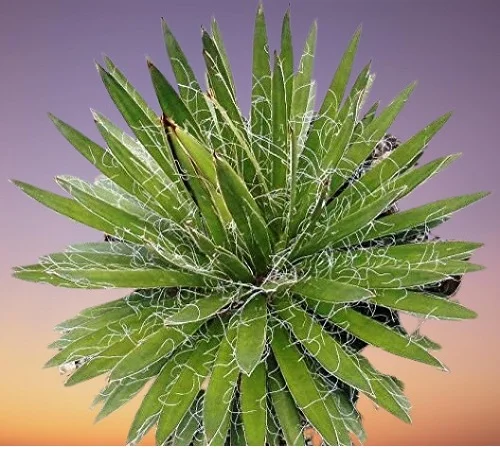Cycas revoluta (Sago Palm) Care Indoors, Propagation and Common Problems
Some links in this post may be affiliate links
Cycas revoluta (Sago Palm) requires bright light with some sunlight, average warmth and humidity, and moderately moist, rich, well-drained succulents soil coupled with monthly feeding in spring and summer.
Sago Palm is among the popular drought-tolerant plants and bears an attractive, dark-green rosette of stiff arching foliage.
Sago Cycad leaves grow out into a feather-like rosette up to about 3-5 feet in diameter. The leaves are a deep semi-glossy green and reach a length of 20-60 inches long. The leaflets are stiff and have strongly recurved or revolute edges.
The trunk is characterized by a thick coat of fibers and can branch several times to produce multiple heads of leaves. Though distinctly palm-like, it is not a true palm but belongs to the family Cycadaceae.

Botanical name: Cycas revoluta
Synonmy: Cycas aurea, Cycas inermis
Family: Cycadaceae
Common name: Sago Palm, King Sago, Sago Cycad, Japanese Sago Palm
Origin
Cycas revoluta also called Cycas aurea or Cycas inermis is native to Southern Japan including Ryukyu Islands and grows best in sandy, well drained soil with some organic matter.
Size
Japanese Sago Palm is a slow-growing plant which matures at the height of 2 feet. The leaves can reach a length of 20-60 inches long and a diameter of about 3-5 feet.
Is Cycas revoluta toxic?
Yes. All parts of Cycas revoluta are toxic to both pets and humans if ingested as indicated by ASPCA. The seeds contain the highest level of the toxin cycasin which causes gastrointestinal irritation and liver failure.
Where to Buy
Would you like to add Sago Palms to your collection? You may obtain them online from Amazon (Link to Amazon).
How to Care for Cycas revoluta Indoors
To care for Cycas revoluta indoors, provide bright light with 4-6 hours of direct sunlight, warmth of 18-270C, humidity of 50-55% and moderately moist, fertile, well-drained succulents potting soil coupled with monthly feeding in spring and summer.
Sago Palm needs regular pruning to keep it neat and tidy. Repotting is only necessary when the plant is pot-bound. Keep reading for more on these growing conditions.
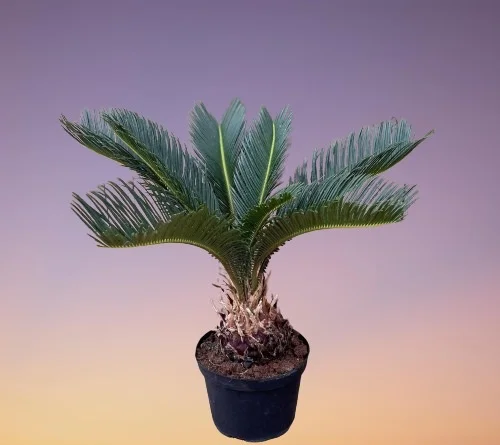
Watering
How often should I water Cycas revoluta?
Water Cycas revoluta liberally in spring and summer while allowing the top 2-3 inches of soil to dry out between waterings. Keep the soil moderately moist and avoid overwatering to prevent rotting and yellowing.
Significantly, reduce watering in fall and winter to maintain the soil slightly moist as growth is slowed at this time. Do not allow the soil to dry out completely to prevent wilting and drooping leaves.
Use water that is at room temperature to avoid cold shock which can cause stunted growth. Ensure the water is free of chlorine and other dissolved chemicals to prevent browning of the leaves.
Avoid wetting the crown which can lead to crown and stem-rot disease resulting in the death of the plant.
Select a pot with a drainage hole and loose, fast-draining soil to prevent waterlogging which can lead to rotting and loss of the plant.
Light Requirements
Do Sago Palms need sun or shade?
Sago Palms grow best in bright light with 4-6 hours of morning or late afternoon sunlight. It can also tolerate direct sunshine but it needs to be acclimated gradually.
Too little light will result in stunted growth and yellowing of the leaves. Therefore, where the natural lighting is not adequate, use full spectrum grow lights to supplement it.
Rotate the pot regularly to ensure the plant receives light on all sides for uniform growth and prevent lopsided growth.
Temperature & Humidity
Cycas revoluta thrives in a warmth of 18-270C with a minimum of 100C in the cold season. It is tolerant to cold temperatures provided the ground is dry.
Sago Palm prefers a humidity of 50-55%; it has no need for extra humidity. Do not mist the leaves and maintain good air flow to minimize fungal diseases.
Fertilizer
What is the best fertilizer for Cycas revoluta?
Feed Cycas revoluta with a balanced, water-soluble fertilizer every 4 weeks in spring and summer to promote a lush growth.
Do not feed in fall and winter as growth is minimal and feeding at this time may lead to fertilizer burn which is indicated by browning of leaf tips and edges.
Once in a while, flush out accumulated salts by running a stream of water through the soil until it drains through the drainage hole. Allow the stream of water to run for some time and repeat the process several times.
Potting Soil
The best soil for Sago Palm should be rich in organic matter and free-draining to prevent it from getting soggy while providing the required nutrients. Cactus and succulents potting mixes are ideal for this plant as they drain easily and do not hold excess moisture.
Repotting
Repot Sago Palm during the growing season (spring to early summer), only when pot-bound as it does not like to be disturbed. Use fast draining soil that is rich in organic matter and a pot with a drainage hole to prevent the soil from getting soggy.
To control the growth, grow the plant in a small-sized pot to prevent it from becoming too big. Take a look at these pots with drainage hole on Amazon.
Pruning & Grooming
Pruning Sago Palm involves frequent removal of any dead and yellowing fronds to keep the plant neat and tidy. Cut the fronds at the base with a clean, sharp pair of pruning scissors while taking care to avoid injury as the leaflets are sharp-pointed.
Wash the leaves by splashing water from a hose or a spray bottle to keep them clean as well as discourage pests infestations.
Cycas revoluta Propagation
Cycas revoluta (Sago Palm) is propagated from seed or offsets (pups) from mature plants. It is best propgated at the beginning of the growing season (spring to early summer) when in active growth for faster establishment.
1. Propagating Sago Palm from offsets (pups)
- Carefully seperate the offset (pups) from the mother plant by cutting with a clean knife or pair of pruning scissors. Ensure the offset has some roots to enhnace establishment.
- Fill a pot one thirdway with loose, well-draining soil. Ensure that the pot is slightly wider than the base of the offset
- Position the offset in the center of the pot and continue to bury the base and roots of the offset. Maintain it at the same soil level as it was in the previous pot to avoid rotting.
- Place the set up in a warm, brightly-lit spot away from direct sunlight to prevent scorching.
- Maintain the soil moist through out until new growth emerges on the offset.
- Allow the new plant to be well established before transfering it to its permanent position after which you can begin routine care.
2. Propagating Sago Palm from seeds
The seeds take several months to germinate and achieve adequate size for transplanting. The seeds contain toxins therefore wear gloves when handling.
- Soak the seeds in water for a day to soften the outer husks.
- Remove the husks and sow the seeds about 1-2 inches deep in moist, well-draining soil.
- Place the set up in a warm, well-lit place away from direct sunlight.
- Maintain the soil moist through out until germination takes place.
- Allow the new plant to be well established before transplanting into a pot one size larger after which routine care can begin.
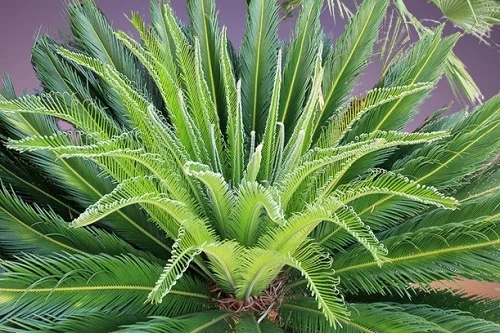
Sago Palm Problems & Remedies
Sago Palm (Cycas revoluta) problems are yellow leaves, plant dying, browning leaves, brown leaf tips, brown leaf spots, pests and diseases among others. Keep reading for more on these problems and how to fix them.
Yellow leaves
Why is my Sago Palm turning yellow?
Some of the causes of yellow leaves on your Sago Palm are too little light, soggy soil, inconsistent watering, temperature stress, nutrients deficiency or aging.
How to fix it
Remove the yellow leaves by cutting at the base with a clean, sharp pair of pruning scissors. Take care to avoid injury by the sharp-pointed leaves.
Too little light: Position the plant in bright light with 4-6 hours of sunlight or use a grow light if you do not have enough light in your home.
Soggy soil: Use fast-draining succulents soil and a pot with a drainage hole.
Inconsistent watering: Water when the top 2-3 inches of soil feel dry to the touch but do not allow the soil to dry out completely.
Temperature stress: Keep the plant away from drafts like hot air vents, AC units, hot surfaces, windy doors, drafty windows among others.
Nutrients deficiency: Feed the plant monthly in spring and summer with a balanced, water-soluble fertilizer.
Aging: This is a natural process. As the lower leaves mature, they turn yellow, brown and eventually die.
Plant dying
What is kiling my Sago Palms?
Your Sago Palm may be dying due to overwatering, soggy soil, insufficient light, temperature stress, use of cold water, salts buildup, nutrients deficiency, pest infestations or fungal diseases.
How to fix it
Overwatering: Do not water on a schedule. Water when the top 2-3 inches of soil feel dry to the touch.
Soggy soil: Use fast-draining soil and a pot with a drainage hole.
Insufficient light: Place the plant in bright light with 4-6 hours of sunlight or use a grow light if you do not have adequate light in your home.
Temperature stress: Keep the plant away from drafts like hot air vents, AC units, hot surfaces, windy doors, drafty windows among others.
Use of cold water: Water with room temperature water to prevent cold shock.
Salts buildup: Flush out excess chemicals by running a stream of water through the soil until it flows out through the drainage hole.
Nutrients deficiency: Feed the plant with a balanced, water-soluble fertilizer monthly in spring and summer.
Pest infestations: Regularly inspect the plant for these pests and carry out timely control measures. (See below under 'pests').
Fungal diseases: The plant is prone to crown and stem rot disease which is promoted by wetting of the crown during watering. (See below under 'diseases').
Browning leaves
The main causes of brown leaves on your Sago Palm are underwatering, extreme temperatures, salts buildup or aging.
How to fix it
Underwatering: Do not water on a schedule. Water when the top 2-3 inches of soil feels dry to touch.
Extreme temperatures: Keep the plant away from sources of drafts like windy doors, heat sources, AC units, hot air vents among others.
Salts buildup: Avoid too much fertilizer and do not feed in fall and winter. Flush out excess chemicals from the soil.
Aging: The lower leaves may turn brown and droop due to age.
Brown leaf tips
Brown leaf tips on Sago Palms are caused by underwatering or salts buildup.
How to fix it
Underwatering: Water when the top 2-3 inches of soil dry out but never allow the soilball to dry out completely.
Salts buildup: Regularly leach out accumulated salts by running a stream of water through the soil until the water comes out through the drainage hole.
Brown leaf spots
Brown leaf spots on Sago Palms are due to overwatering, soggy soil or cold drafts.
How to fix it
Overwatering: Water when the top 2-3 inches of soil dry out. Do not water on a schedule to avoid overwatering.
Soggy soil: Use well-draining soil and a pot with a drainage hole.
Cold drafts: Keep the plant away from cold drafts like windy windows and doors, AC units and others.
Pests
Common pests on Sago Palms are spider mites, scale insects and mealybugs especially in dry, stuffy conditions.
How to fix it
- Isolate the affected plant to prevent spread to other plants.
- Treat the plant with a horticultural oil as per the manufacturer's recommendations.
- Regularly check underneath and between the leaves for these pests and carry out timely control measures.
- Keep the plant well pruned and raise humidity to discourage the pest infestations.
Diseases
Sago Palms are prone to crown and stem-rot disease which presents as leaf browning accompanied by rotting. It is caused by soggy soil and wetting of the crown.
How to fix it
- Discard the affected plant as it will not recover.
- Avoid wetting the crown in future; water from the bottom in the future.
- Use a pot that has a drainage hole and well-draining soil to prevent waterlogging.
You liked it? Share on social media.
Related Content
Amazon Associates Disclosure
Homeplantsguide.com is a participant in the Amazon Services LLC Associates Program, an affiliate advertising program designed to provide a means for sites to earn advertising fees by advertising and linking to amazon.com.

